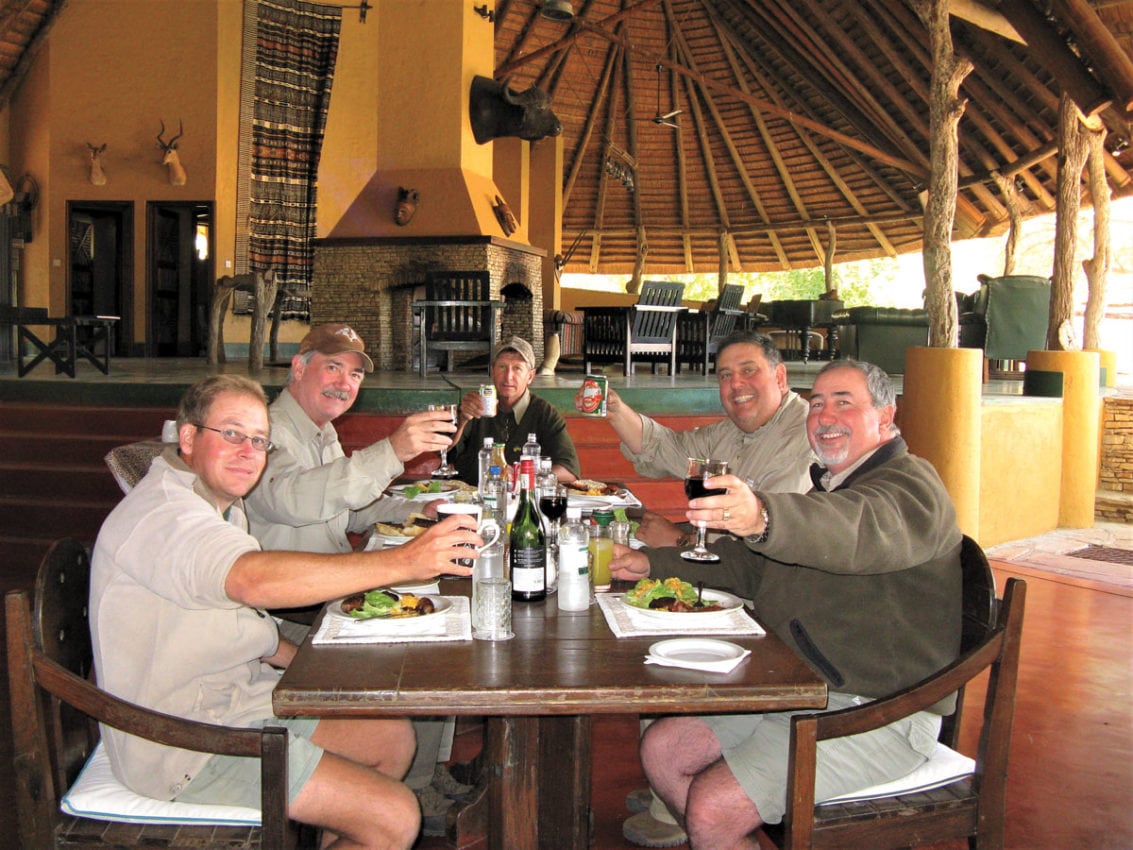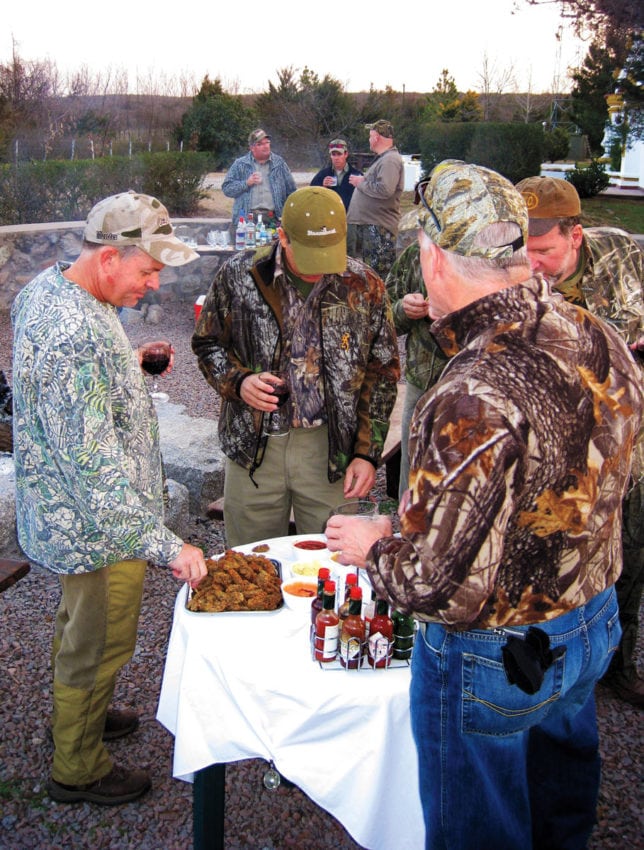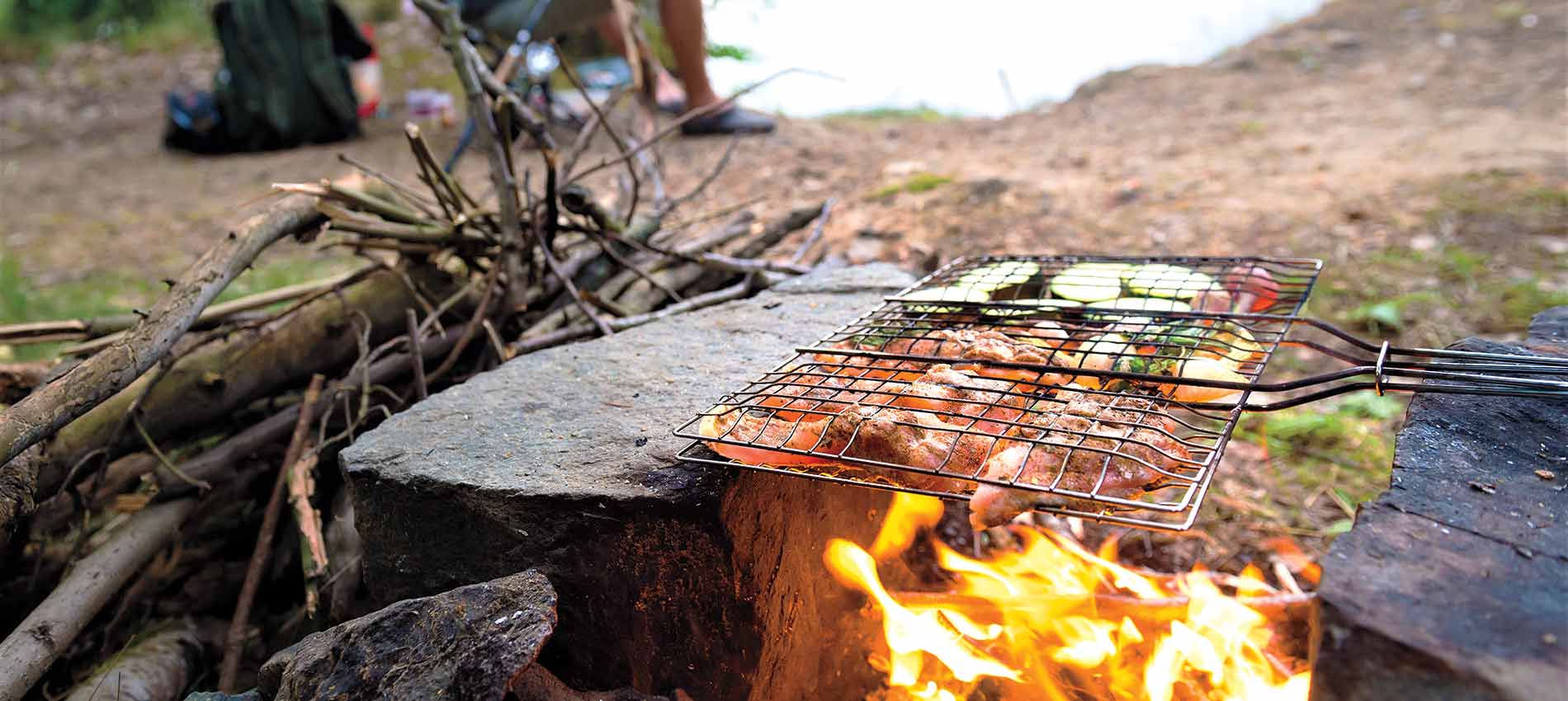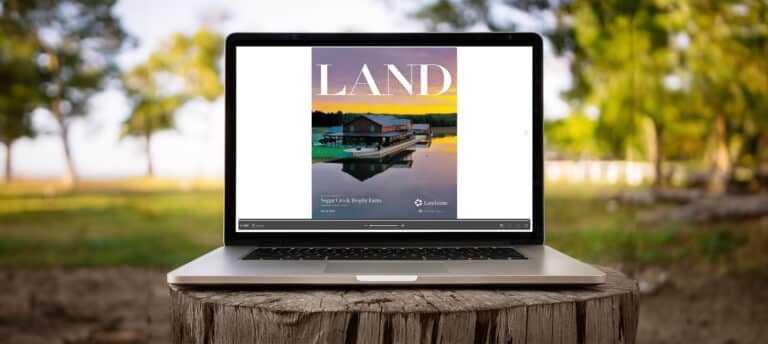
After over three days of rigorous elk hunting in the heavenly Sangre de Christo Mountains of Southern Colorado, Ann said, “This moment, right here, is one that I will never forget.” No, the occasion was not the harvest of a big bull elk. Rather, instead of breaking out a sack lunch with sandwiches, I surprised her and her husband, Tom, with ribeye steaks, fresh asparagus, and cob corn, all cooked over hot coals beside a running stream, followed by a glass of their favorite white wine. It had already been a successful hunt, but this little treat created a big moment, putting a bow on a memorable hunting experience.
Most wildlife-based recreational businesses incorporate a culinary component into their product package. Whether it’s hunting or fishing trips that the proprietor is offering to the market-place, or birding and backpack excursions, meals are generally one of the central features of the service portfolio. Quality meals do not happen by accident. Appropriate planning, adequate cooking skills, and even going an extra step with “presentation” can make a difference in the quality of the dining experience. This article is not intended to serve as a “how to” piece on becoming a gourmet chef, but is intended to offer a mile-high look at a few cornerstone considerations for enhancing the outdoor enterprise through the culinary compartment.
Food safety
Dining should be a safe and wholesome experience. Two big considerations, here, include food allergies and food sanitation. These days, it appears food allergies are either more prevalent across our society, or perhaps people are simply more in-tune with this side of their health and well-being. The good news is that most people who have serious food allergies know what those allergies look like and it’s not that difficult to profile those matters prior to the event through a simple questionnaire. With adults, the four major food allergy groups of concern include peanuts, tree nuts, fish, and shellfish, but there are others, as well.
Have your own wildlife business-related question? Ask Greg here!
Ensuring appropriate food sanitation is another important step in addressing food safety. Sanitizing of food prep surfaces, equipment, and the hands that prepare the foods, are basic steps to help avoid bacterial issues. There are many common disinfectants on the market, so keep at least one of these products handy and use it regularly. A classic example of cross-contamination would be to handle raw poultry and then, before sanitizing your hands, to handle apples that will not be cleaned or cooked prior to consumption. Kitchen staff should always be mindful of these considerations.

Know your clients and know your boundaries
In addition to possibly anticipating special dietary needs from clients, it’s also an advantage for the chef to have an idea of the area of the country(s) where those clients live, and perhaps even their ethnicity. Along these lines, I always tell my chefs, “Unless you are confident in your cooking skills, don’t prepare lasagna for a group of Italians,” and if they do, it better be darn good home-made lasagna. This may be a broad anecdotal paintbrush, but you get the point. Also, in the part of the world where I live, we tend to like our foods on the spicy side, with plenty of heat, but I’ve found that people from the northeast generally do not handle the spicy foods very well. Now don’t get me wrong, I do think it can be a great idea to impart some local culture into the persuasion of the meal plan, but there needs to be some forethought put into these matters.
Also, let’s face it, not all chefs, regardless of their training or experience, are created equal. So, don’t push your kitchen staff to prepare certain foods that they simply do not have the skill-sets to prepare with excellence. Work with your chef to create a meal plan that you feel suits the tastes of your clients, fits within the sideboards of the chef’s comfort zones, while also meeting your financial budgets. And speaking of nbudgets, it’s my opinion that food quality is not an area to cut corners. Spend the extra money to get quality cuts of meat, fresh produce, and ample amounts.

Go wild
I think it’s only fitting, in this business, to build some wild game components into the meal plan when it’s reasonably possible. Any of the native deer,
upland birds, other game meats, and wild-caught fish can provide exceptional dining quality while also adding to the unique “wildness” of the experience. Should freshly harvested game be in short supply, certain “game” meats can be readily purchased from the local grocer, such as bison, exotic deer, pheasant, quail, and even alligator. There are many great options for wild game to be incorporated as a starter or as the main feature of the entrée.
Presentation counts
Even with simple dishes, such as cold cuts, it’s not difficult to build an attractive presentation that can significantly complement the meal quality and dining experience. Serving plates, decorative arrangements, and a nice little touch will not go unnoticed. Also, hunting, fishing, and other nature-type excursions provide fertile opportunities to occasionally take advantage of beautiful outdoor “dining rooms.” When the weather is nice, a well-prepared sack lunch under a big live oak tree in the back forty, or at an overlook that proves a scenic vista, will allow you to take advantage of the various “tools” that are available in the outdoor toolbox. Again, be creative, while also keeping things simple, and you’ll find that pleasant and memorable dining experiences do not always require gourmet meals.
Have your own wildlife business-related question? Ask Greg here!


